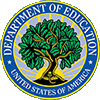 Contact
Us | Change
Text Size | Search
Site
Contact
Us | Change
Text Size | Search
Site Emergency Info Online, Fifth Edition
Next: Emergency Notification
Previous: Emergency Preparedness in the Hospitality Industry
III. Stay Informed
NOTHING TO SNEEZE AT:
Preparing for Pandemic Flu in School
By John Cavanagh and Anne Malia
Seasonal flu is a contagious illness that is caused by influenza viruses that are similar to those of previous years. Some people may have built up immunity and there also is a vaccine for each year’s flu season. A pandemic is a global outbreak of disease that occurs when a new form of influenza virus emerges in the human population. It is spread easily from person to person and causes serious illness. Since most people have not been exposed to the new influenza strain, there is little or no pre-existing immunity. There have been three pandemics in the last one hundred years, in 1918, 1957 and 1968. While no one can predict the arrival or severity of the next pandemic, many doctors believe that it is only a matter of time before the next one occurs.
Worse Case Scenario…
A particularly serious influenza pandemic could lead to alarming levels of illness, death, societal disorder, and economic cost. Normal life would be disrupted because so many people in various positions would become seriously ill simultaneously. Disruptions would range from school and business closings to the interruption of basic public services such as transportation, food delivery, and medical services. Since a substantial number of the population would require some form of medical care, there could result in a shortage of hospital staff, beds, ventilators, and other supplies. Service and care at non-traditional sites, such as schools, may need to be created in order to cope with the situation. The demand for antiviral drugs would likely surpass the supply of the vaccine. The death rate would be determined by four factors: the number of people who became infected; the strength of the virus; the vulnerability of the affected populations; and the effectiveness of preventative measures.
It is certain that individuals, businesses, corporations, schools, and other organizations will be asked to take certain steps to help limit the spread of a pandemic, diminish the number of victims, lessen the economic impact, and maintain the effective functioning of society. In short, we will all be called upon to do our part. As usual, schools are a critical factor the community equation. If students are dismissed from school but educational facilities remain open, school and education-related assets, including school buildings, school kitchens, school buses, and staff may continue to remain operational and be of value to the community in other ways. Also, faculty and staff may be able to continue to provide lessons and other services to students by television, radio, e-mail, Internet, telephone, or other media. Schools have the potential to play a crucial role in protecting the public’s health and safety when an influenza pandemic occurs. However, these beneficial elements are unlikely to be utilized unless serious pandemic preparedness planning occurs now.
School Action Steps for Pandemic Planning:
As with any emergency situation, success in coping with a pandemic depends upon the planning that takes place before the fact. The Illinois Department of Public Health has developed a list of important actions that schools should take to prepare for a pandemic influenza outbreak. These include:
- Create a pandemic flu plan.
- Work with local health and emergency preparedness officials. They may want to use schools as a way to disseminate information to families.
- Train nurses and staff in flu-symptom recognition. Ensure that standard surveillance/disease recognition procedures are in place and implemented.
- Improve the hygiene of students and staff.
- Decide to what extent you will encourage or require children and staff to stay home when they are mildly ill.
- Identify students who are most vulnerable to serious illness (immunity compromised, chronic illness, etc.). Review the health needs of students. Some students may have a greater risk of infections. Encourage those families to talk to their health care provider. Some parents may need to be more cautious in keeping their children out of school.
- Through consultation with your regional office of education and local authorities, develop alternative learning strategies, which may involve collaborative agreements (television or other local cable stations, teleconferencing, lessons on DVDs, etc.).
- Educate staff, students, and parents about: the differences between seasonal flu, bird flu and pandemic flu; best hygienic practices to prevent any sort of flu; what could occur in a pandemic.
Resource 7 - Schools:
Emergency Planning: Pandemic
http://www.ed.gov/admins/lead/safety/emergencyplan/pandemic/index.html
The U.S. Department of Education is collaborating with health experts and agencies across the federal government to ensure that, in the case of pandemic flu, educational operations and services would continue. This resource offers tools designed to assist educators, administrators, and local officials in disseminating health information, planning for staff and student absences, and maintaining a learning environment in the wake of a pandemic outbreak.
About the Writers
John Cavanagh is Communications Director for Bridge Multimedia and Chief Researcher for Emergency Information Online.
Anne Malia writes about technology and emergency preparedness for people with special needs and has contributed to the production of EmergencyPrepOnline.org and EdTechOnline.org.
Article inquiries welcome. On request, we can provide feature-length articles tailored to your audience and requirements. Please contact John Cavanagh at Bridge Multimedia: (212) 213-3740 or jcavanagh@bridgemultimedia.com.
Previous: Emergency Preparedness in the Hospitality Industry
Return to top of page

